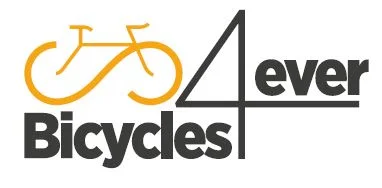Is Your Hydration & Fueling Strategy Failing You? Pro tips & strategies for Long Distance Cycling with BuzzAlong
Video Is Your Hydration & Fueling Strategy Failing You? Pro tips & strategies for Long Distance Cycling with BuzzAlong
Video Is Your Hydration & Fueling Strategy Failing You? Pro tips & strategies for Long Distance Cycling with BuzzAlong YouTube Channel.
Is Your Hydration & Fueling Strategy Failing You? Pro tips & strategies for Long Distance Cycling
BuzzAlong is a podcast that delves into the intricate world of cycling, specifically focusing on topics such as hydration, fueling, caffeine intake, and overall performance optimization. Hosted by Sherry, the podcast aims to provide valuable insights and strategies for cyclists looking to enhance their endurance and performance in challenging events like ultra races.
### The Importance of Strategic Fueling and Hydration
When preparing for long-distance ultra races like the ones discussed on BuzzAlong, it is crucial to have a well-thought-out fueling and hydration strategy in place. According to Emily, a member of the sports science team at Precision Fuel and Hydration, there are three key levers to consider when planning such strategies: carbohydrates for fueling, fluids to replace sweat losses, and sodium for electrolyte balance. By ensuring the proper intake of these essential elements, cyclists can optimize their performance and endurance during grueling events like the Badlands race in the scorching Spanish desert.
#### Precision in Preloading Electrolytes
One of the key recommendations made by Emily is the concept of preloading electrolytes before an event like the Badlands race. By consuming a strong electrolyte concentration the night before and in the morning of the race, cyclists can ensure proper hydration and fluid retention, setting themselves up for success in the face of extreme conditions. This preloading strategy helps combat dehydration and electrolyte imbalances that can hamper performance during extended endurance events.
#### Individual Sweat Rate Considerations
Emily highlights the importance of understanding individual sweat rates and sodium losses when planning fueling and hydration strategies. Each cyclist’s body is unique, and factors such as intensity, clothing, and environmental conditions can influence sweat rates significantly. By measuring sweat rate through pre-and-post exercise weight measurements, athletes can tailor their fluid intake to match their individual needs, ensuring optimal hydration and performance during events like Badlands.
### Gender Differences in Hydration and Fueling
While some studies suggest that female athletes may struggle more with issues like edema due to drinking strategies, Emily emphasizes that hydration needs are primarily individual rather than gender-specific. Factors like sweat sodium concentration and sweat rate vary across individuals, making it essential for each athlete to personalize their fuel and hydration approach based on their unique needs. By customizing strategies to match individual physiological profiles, cyclists can optimize their performance and avoid issues like dehydration and electrolyte imbalances.
#### Gut Training for Carbohydrate Tolerance
When it comes to fueling with carbohydrates during long races, Emily discusses the concept of gut training to improve carbohydrate tolerance. By gradually increasing carbohydrate intake during training sessions and races, cyclists can enhance their ability to absorb and utilize fuel efficiently, preventing issues like GI distress and optimizing energy levels during endurance events like the Badlands race. Practicing consistent fueling and incorporating a variety of carbohydrate sources can help cyclists maintain optimal performance levels throughout extended races.
#### The Benefits and Considerations of Caffeine Consumption
Caffeine is a popular ergogenic aid used by many athletes to enhance performance during endurance events. Emily advises cyclists to incorporate caffeine strategically during long races, focusing on timing and dosage to avoid energy crashes. By waiting until the middle of the night to introduce caffeine and drip-feeding small doses to maintain elevated levels, cyclists can leverage the performance-enhancing effects of caffeine without experiencing adverse effects like jitters or energy dips. Personalizing caffeine intake based on individual tolerance and race conditions can help cyclists optimize their performance during challenging events like Badlands.
### Planning for Optimal Performance
In preparation for races like Badlands, having a comprehensive fueling and hydration plan is essential for cyclists looking to maximize their performance. Utilizing tools like the online Fuel and Hydration Planner from Precision Fuel and Hydration can help athletes calculate their individual carbohydrate, fluid, and sodium needs based on event duration and intensity. By following scientific recommendations and practicing their fueling strategy during training sessions, cyclists can fine-tune their approach and ensure they are adequately prepared for demanding races like Badlands.
#### Carb-Loading and Race-Day Nutrition
Carbohydrate loading is a common practice among cyclists preparing for long races, focusing on increasing carbohydrate intake in the days leading up to an event. Meals rich in carbohydrates, such as porridge, toast, bagels, and bananas, are popular choices for cyclists looking to top up their glycogen stores and fuel their bodies for optimal performance. By prioritizing carbohydrate-rich foods in the hours before a race, cyclists can ensure they have the energy reserves needed to sustain their efforts over extended durations like those encountered in events like Badlands.
#### Exploring Fasted Training Strategies
Fasted training has gained popularity among cyclists looking to improve their metabolic efficiency and endurance. While fasting before short, low-intensity sessions can enhance fat utilization and metabolic adaptations, cyclists should be cautious about implementing fasted training strategies consistently. Emily suggests reserving fasted sessions for specific training purposes, emphasizing the importance of replicating race-day conditions to optimize performance. By balancing fasted training with strategic fueling approaches, cyclists can enhance their metabolic flexibility and performance capabilities for challenging events like ultra races.
The opinions expressed in this space are the sole responsibility of the YouTube Channel BuzzAlong and do not necessarily represent the views of CicloNews.

